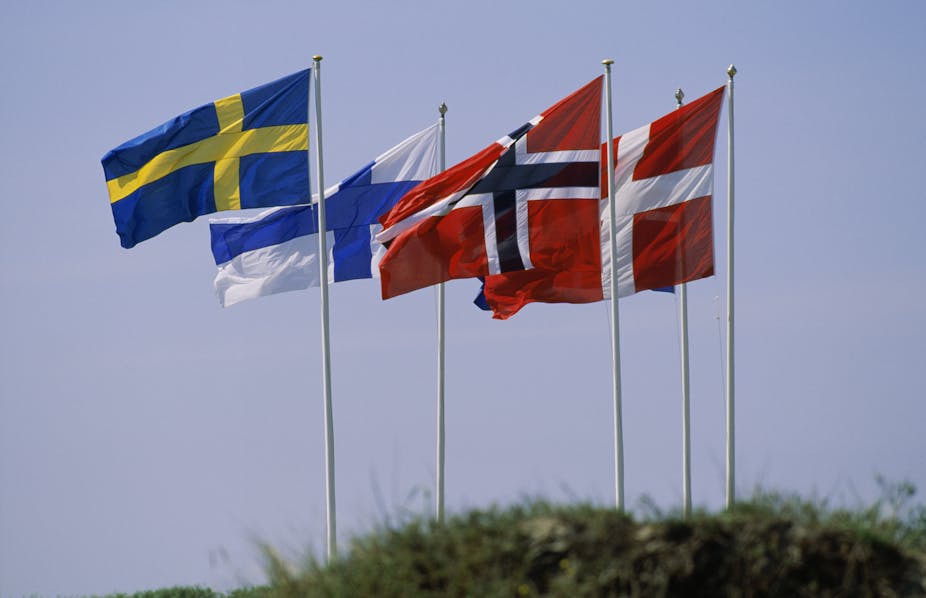At the end of this month Australia’s Productivity Commission will issue the final report of its inquiry into Early Childhood Education and Care.
The inquiry was limited from the outset by the requirement that changes must be within existing funding parameters. Although asked to review alternative approaches that are used overseas, it was directed towards New Zealand’s precedent of subsidising at-home carers or nannies. The inquiry failed to consider the far more successful and comprehensive policy approach taken by Sweden and other Nordic nations.
The OECD has identified Australia as one of a small number of countries in which long working hours are common. In comparison, parents in Sweden and the other main Nordic countries have working weeks shorter than the OECD average. This is in addition to their substantial paid parental leave and publicly provided child care.
Shorter working hours allow parents from Sweden to pick up their children after work without the time pressures Australian parents face.
Australia will probably move to make child-care centre hours more flexible to suit our long working hours. However, the government should encourage shorter working hours, which are more compatible with family life.
Crumbling boundaries between work and home in Australia are leading to considerable and increasing unpaid work and causing social harm. More than three million workers in Australia are now losing sleep because of work stress.
According to the Australia Institute,
The current labour environment is contributing to high levels of stress and anxiety; sleep loss and depression for many Australians. This has adverse effects on their health, family life and relationships.
This is also an impediment to greater economic productivity.
Policies for the people
Sweden acts as a good point of comparison for Australia – and not just in terms of child care. Its social policies have proved to be very successful in terms of economic outcomes and at the polls.

The Social Democratic Party and allied parties were returned to office in the Swedish election on September 18 this year. No party other than the Social Democrats has governed for more than two consecutive terms in Sweden since 1932.
If, as is likely, the new government goes on to serve its full four-year term, by 2018 the Social Democrats will have led the government for 69 of the 86 years since 1932 – or more than 80% of that time.
This unparalleled electoral and policy success over a very long period makes the Swedish Social Democrats the most successful political party in the world. Much of this can be attributed to the party’s policies of regulated working hours and substantial welfare provision.
Even when the Social Democratic Party did suffer serious setbacks to its primary vote in recent years (it was out of office for two terms from 2006 to 2014), its opponents had to concede much policy ground to beat the party and its allies.
Voters did not reject the fundamentals of the welfare state. Nor did the Swedish people vote in favour of more economic inequality on the scale that it exists in the English-speaking world.
The Feminist Initiative party is one of several left-of-centre parties whose vote increased in the 2014 election. The new party fell short of parliamentary representation this time, but is likely to continue to grow. It will contribute to a more varied left-of-centre electoral coalition, which can be expected to further strengthen Sweden’s accomplishments in gender equality.
Other similar political parties within the Nordic nations have been repeatedly popular in the polls. This includes the Danish Social Democrats and Norwegian Labour Party.
In Finland, the Social Democratic Party has not been as electorally dominant but has also had considerable influence, particularly in education policy.
These Nordic social democratic parties have managed to avoid thoroughly following neoliberal economic policies, unlike many English-speaking countries, yet have run some of the most successful of the developed economies. They are proof of how left-of-centre parties can, with clear objectives, set the policy agenda in developed nations. Studying their lasting policy achievements is therefore of immense value for social democrats across the world and for the Labor Party in Australia.
The Nordic success story
Sweden and the other main Nordic nations continue to provide living proof that economic prosperity can be combined with social equality and environmental responsibility.
In terms of income distribution these countries have much more equality than Australia, Britain, New Zealand and Canada – and nearly twice as much as the United States.
Workforce participation rates are high in the Nordic nations but working hours remain within reasonable limits, enabling genuine work-life balance.
Sweden has played a leading role in lowering poverty and improving well-being among children, including through the provision of extensive paid parental leave.
Finland has achieved stunning success in schools since the 1990s.
Denmark, like Sweden, invests in comprehensive skills training as part of providing security and flexibility in employment. This includes quality skills retraining programs of the kind which Australia’s car industry workers will need. Investment in these programs has kept unemployment in Denmark lower than Australia in all but one of the years between the early 1990s recession and the 2008 global financial crisis.
Meanwhile, Norway’s approach to taxation has ensured that natural resources are used sustainably for the nation’s long-term wealth.
All these achievements support the argument that Australia should look to the approach adopted by these Nordic countries when developing our own policies.

